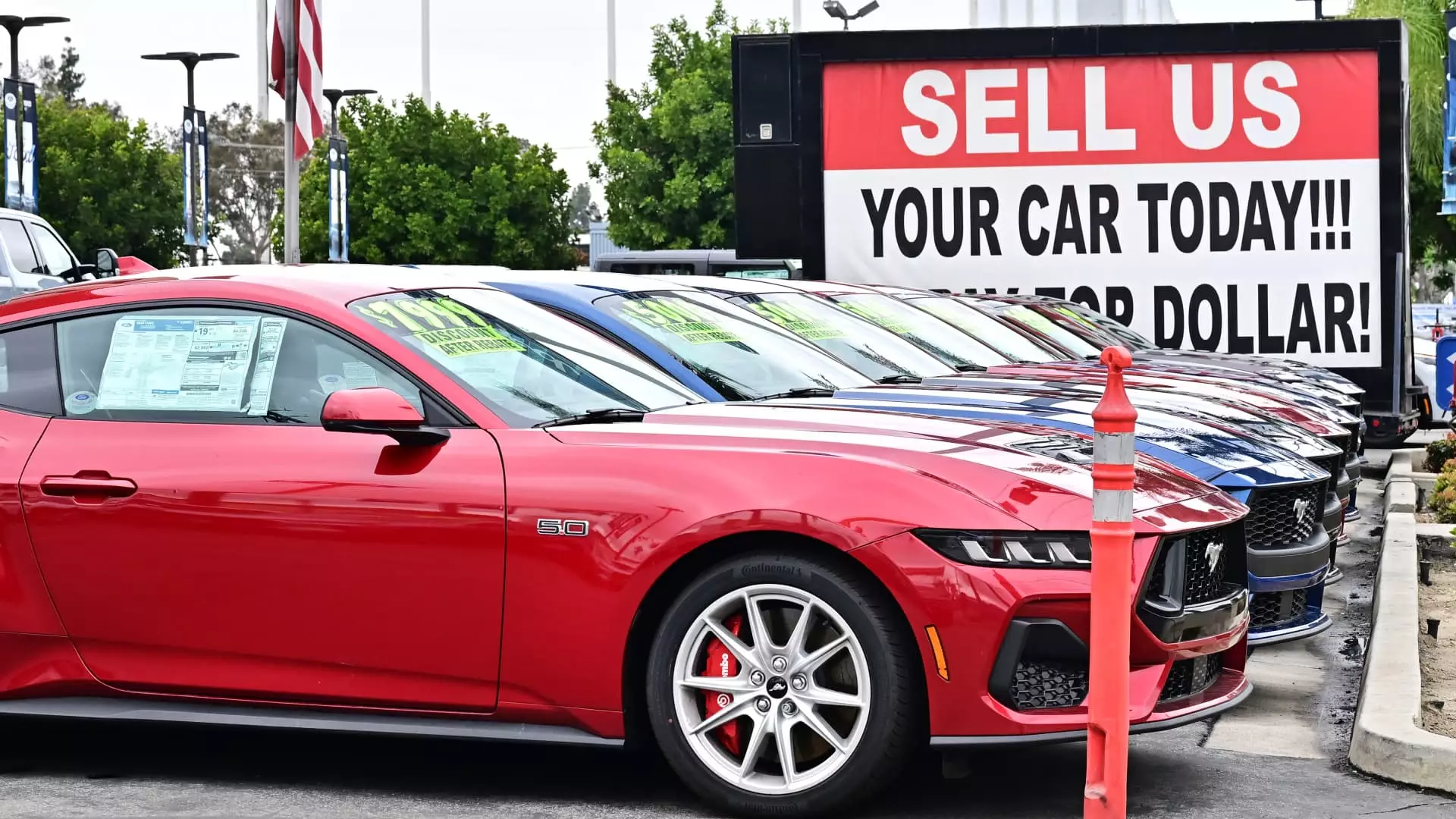In the dynamic landscape of the automotive industry, the recent shift in used vehicle prices serves as yet another reminder of the volatile intersection between consumer behavior and broader economic forces. While prices saw a slight dip of 1.5% from April to May, this contraction is surprisingly shallow when juxtaposed with a stark 4% increase year-on-year. It compels one to question whether we are observing a transient fluctuation or the beginning of a more stable period. Jeremy Robb from Cox Automotive points out that while the market’s movement in April was impressive, the subsequent retreat raises pertinent questions about sustainability and consumer confidence in the used vehicle sector.
The Ripple Effect of Tariffs
At the heart of this marketplace volatility is the ongoing impact of tariffs introduced under the previous presidential administration. While new vehicle tariffs of 25% do not directly influence the prices of used vehicles, the indirect effects seep into the market dynamics on which consumers depend. The uncertainty surrounding the cost of new vehicles alters consumer decisions, often sending potential buyers into the used vehicle realm. It’s a classic case of trickle-down economics gone awry – if new cars become prohibitively expensive, it doesn’t merely adjust the market; it shifts consumer preferences and buying power altogether.
Why Demand Persists Despite Challenges
Surprisingly, consumer demand for used vehicles remains robust despite inventory levels that are historically low, currently sitting at around 2.2 million units. This can partly be attributed to consumers holding onto their vehicles for more extended periods due to economic hesitations, supply chain disruptions, and the lingering impacts of the COVID-19 pandemic. Each of these elements compounds the scarcity effect, driving prices upward for a sector that ideally should be more accessible to the average American family.
The average consumer, already burdened by inflation and economic instability, finds themselves between a proverbial rock and a hard place: the new car market is out of reach, while used vehicles, despite being priced lower, still present significant obstacles. This paradox highlights a critical need for policy changes focused on consumer protection and market stabilization – ensuring that access to reliable transportation does not become a privilege reserved for the affluent.
The Long-Term Implications for Consumers
The current market outlook raises serious questions not just about affordability but also about equity in the automotive space. With retail prices failing to follow wholesale trends swiftly, many consumers may find themselves paying a premium without the justified backing of a stabilizing market. The ramifications of this situation could potentially lead to long-term distrust among consumers, resulting in a shift toward alternative transportation methods or a greater reliance on public transport—both measures that would further disrupt the traditional automotive landscape.
The ongoing shifts in the used vehicle market are not just numbers on a chart but reflections of wider societal and economic tensions. As the industry continues to grapple with these changes, stakeholders must prioritize approaches that genuinely support consumers rather than merely capitalizing on their vulnerabilities. The real challenge lies ahead: ensuring that the key to mobility remains in reach rather than becoming a speculated commodity.


Leave a Reply